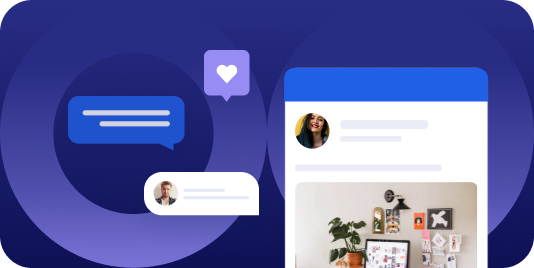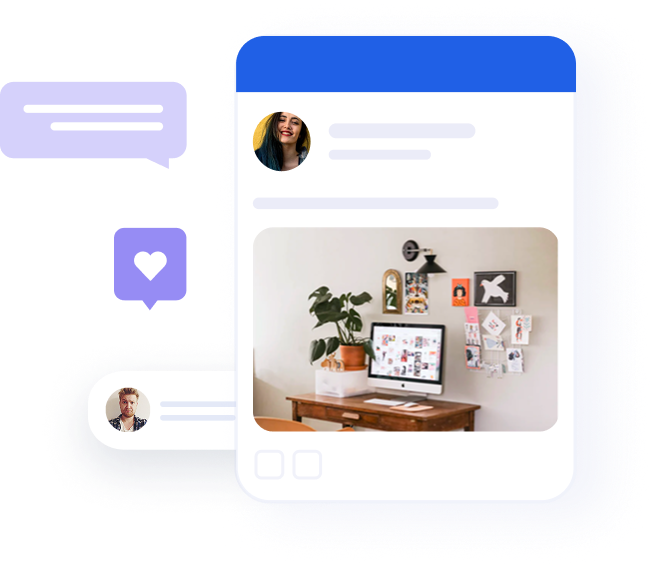
How to understand the marketing rule of 7 in B2B
Table of contents
There’s an old aphorism in marketing that seven is the lucky number of contacts it takes to get a lead to make a purchase. But is the old saying true? The answer is yes, in the sense that it does take multiple contacts, but there’s nothing magic about the number seven. Seven serves as more of a reminder to marketers. If you can count all your contacts with a lead on one hand? You probably haven’t made enough.
The so-called Rule of Seven comes up often in B2C contexts, but it’s just as important for B2B marketers to remember — as long as you don’t get hung up on taking it literally. While the Rule of Seven dates back to the pre-internet era, it still has value if you know how to both interpret and apply it in a B2B context.
What is the Marketing rule of seven?
The basic idea of the rule is simple. Marketers need an average of seven contacts (or touches, impressions, or interactions) to turn a prospective buyer into an actual buyer. Through experience, marketers have learned that a single contact with a prospect is rarely enough to make them fall for your product and buy it on the spot. A handful of interactions usually doesn’t do the job, either. At some point in the past, a group of marketers discovered that seven contacts were ideal for driving purchasing. And so, the Rule of Seven lives on to this day. It probably doesn’t hurt that the number seven is also associated with good luck.
What counts as a “contact” for the Rule of Seven? It all depends on what you’re selling and to whom you’re trying to sell it. Back when this rule originated, contact with a lead might have meant viewing a billboard, listening to a radio commercial, hearing a recommendation from a friend, or seeing an ad in the newspaper.
In today’s digital environment, there are more ways than ever to deliver marketing content, especially with video and over social media. For B2B marketers, contacts can be different and more substantive, such as getting someone to attend a webinar or read a whitepaper. But the basic premise remains unchanged. It takes multiple touchpoints with the lead to get them to go from considering your product to purchasing it.
Understanding the rule of seven
The important thing about the Rule of Seven isn’t the number, but the message: repetition is key. Prospects need to hear and see your marketing message several times before they’re going to buy from you. There are many reasons why repetition is necessary. Generally speaking, it’s not hard to understand that buyers won’t trust you and make a purchasing decision the first time they are exposed to your brand. The exception may be if you’re selling inexpensive, impulse purchase products.
While it is widely accepted that most people need to experience repeat messaging before they take action, there are precisely zero studies that back it up. No one knows the exact number of contacts that lead to sales. That doesn’t invalidate the Rule of Seven. It means that for any particular, individual business, the rule might be better understood as a “Rule of Ten” or even “Rule of Fourteen.” This seems especially true for B2B businesses that sell mission-critical, high-value products. Your own firsthand experience and data may be able to show you a more accurate picture of how many contacts it actually takes to sell your product.
The main takeaway? You’ve got to deliver repeat messaging to your leads.

Recommended for further reading
Why do repeat interactions work?
The typical B2B buyer is 57% of the way through their purchasing journey before they have an actual meeting with a salesperson. It’s hard to imagine that a single interaction would be enough to get any serious customer more than halfway through their buying process. That’s why it’s critical that you’re creating opportunities for multiple points of contact to occur.
Repeated messaging works on several fairly basic psychological levels. The more we see something, the more easily we remember it, and the more likely it is to pop up in our thoughts. Repetition creates familiarity, which makes the sales representative’s job easier. They don’t have to start from square one, explaining what your product can do for the buyer.
B2B sales can significantly benefit from repeated contact because the B2B buying process tends to take longer. This means that a sustained effort to keep your brand and products on your prospects’ minds can make or break your chances of closing a sale. B2B purchasing also frequently involves multiple decision-makers. It can be very advantageous to be the brand that all the buyers have heard about and remember.
5 best practices for using the rule of seven for B2B marketers
The best way to take advantage of the Rule of Seven is to develop a marketing strategy that ensures your leads are likely to have multiple interactions with your brand. This is accomplished by incorporating a wide array of channels for delivering content to your leads.
Social media can be a linchpin of your strategy because it offers multiple platforms and methods for delivering content. Social media is also where you’ll find your leads, and it’s likely they frequently engage on several platforms. More than half of the people on social media use it to research purchasing decisions. But to reach them, you have to know how to target content effectively, or else it’s just going to get lost in the endless scroll of inappropriate ads, cat videos, and other forgettable posts.
1. Know who your leads are
Build a buyer persona based on your typical and likely customers’ characteristics and then segment and target your content delivery accordingly.
2. Develop a content marketing plan
A viral video that generates buzz about your brand can get people to remember you. However, it may not be the content that helps a buyer who’s struggling to make a final decision between your product and your competitor’s. Undoubtedly, top-of-the-funnel content is necessary for lead generation. But, Don’t let the below doughnut chart represent you. Once a lead is “generated”, your job as a b2b marketer doesn’t end. Develop content to accommodate specific touchpoints in the b2b funnel. For example, retarget your audience with novel, more substantive content to deepen their knowledge about your offerings.

3. Mix it up with both paid and organic content
Ads work, but too much ad-speak can turn buyers off. Make sure you’re delivering informative content and try to engage in real conversations. Employee advocacy campaigns can be a great way to share authentic enthusiasm and knowledge about all the things your business can do for its customers.
4. Venture offsite
With guest blogs, interviews, and panels to reach leads who might not be gravitating toward the content on your websites and social media yet.
5. Establish a presence
The inbox shouldn’t be neglected. Use opt-in email content, like newsletters, that nurtures them by providing relevant reading material.
An ongoing marketing effort that utilizes multiple channels will ensure that your leads will reach that magic number of impressions. Whether it’s seven, ten, or fourteen contacts, targeted content that adds value will deliver conversions for your business.
Finding the sweet spot

Is the secret to selling as simple as bombarding your leads with content until they give in and make a purchase? Not quite. Too many “touches” can start to have the opposite effect, leaving your prospective customers feeling like they’re getting spammed with ads — or even harassed.
If you know who your customers are and what they want, you can determine how much contact is too much. What matters is diversifying your messaging. Seven contacts across seven different channels won’t feel overwhelming, but blasting your leads with marketing emails until they’ve opened seven of them isn’t likely to do you any favors.
Marketing automation tools can be beneficial in this regard. They allow you to create a ruleset for how many times to message a lead, then throttle your content delivery to those leads accordingly.
The Rule of Seven is about hitting that sweet spot in repeat messaging to activate your target customer. It doesn’t mean you have to do it seven times exactly. Whatever your lucky number is, you have to craft a marketing strategy that gets the right information in front of your leads multiple times.
Ideally, you want to deliver varied and relevant content to the right targets through the right channels. Eventually, your targets will become receptive to a more direct sales approach. In this way, marketers can guide B2B buyers through the beginning of their purchasing journey.




